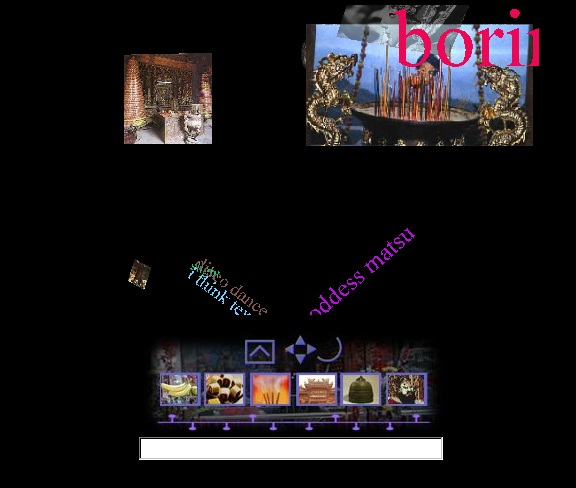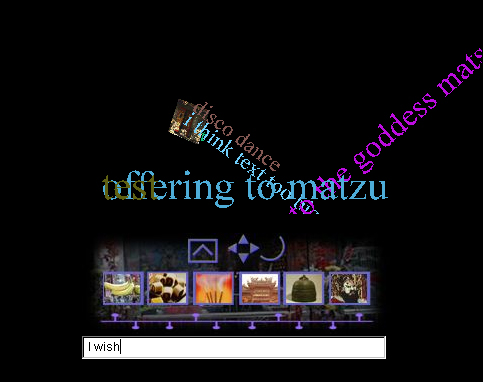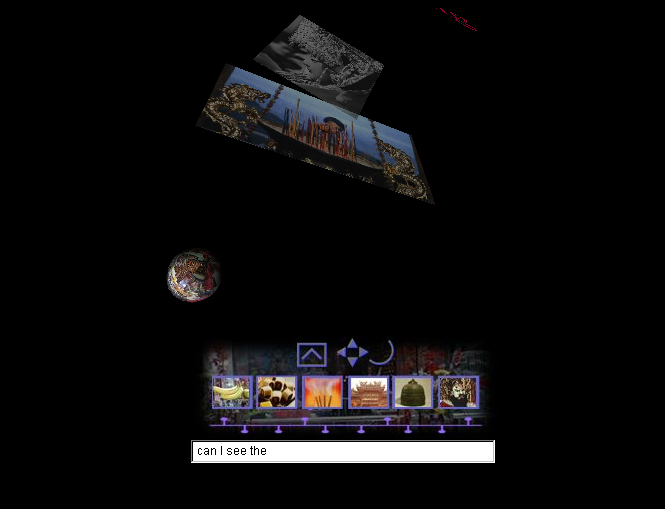



Video
[matsu:goddess]
1999 / computer / software / dimensions: variable
The Water Dreaming: Matsu is a VRML (Virtual Reality Modeling Language) world which explores the story of the Chinese Goddess Matsu (also known as MaCo, Macho, Matzu, Mazoo, and Machu).
Originally named Lin Mo Niang (silent girl), Matsu was born in 960 AD near Meizhou Bay in Fujien Province, China. Her father and family members were fishers, and in a dream, she saw them in trouble and went to save them. Today, she is still revered by sea faring people in Mainland China, Taiwan, Hong Kong, and Singapore. She become much more than the patron saint of fishermen–Matsu is one of the most venerated deities in the Chinese pantheon. Her birthday on the 3rd month, 23rd day of the Chinese calendar is celebrated in Taiwan’s hundreds of Matsu temples. Because she is a powerful female deity and was supposedly visited by Kuan Yin (the Buddhist goddess of compassion and mercy), she is often closely connected to this goddess. Matsu’s face is generally black, and her face is shaded with a beaded veil.
This project began as an attempt to capture the Water Dreaming — decontextualizing space as it might be underwater as the place of action in virtual dream-space. Matsu is said to have saved her father and brother while dreaming: to create her world as a virtual experience seems fitting. The space with-in a computer network offers all of us an avenue for an “out of body” agency.
There are 6 scenes or worlds to the project, with Scene 5 allowing multiple users an area to make offerings of virtual gifts: words, prayers, or stories to the goddess. Users could click on the images to project offerings into the environment, or type thoughts into the world through the text area.
The scenes are animated but users are free to navigate the worlds themselves.
This project began at the National Institute of the Arts (Now Taipei National University of the Arts), Peitou, Taiwan, in January 1999. The project was funded from a grant from the Pacific Cultural Foundation. Special thanks go to SuChu Hsu who was my wonderful host while visiting NIA. Images of Pi Ying Xi (skin puppets) are from the National Institute of the Art’s Center for the Study of Traditional Arts. Some of the images which can be offered to Matsu in the offerings section are from photographer Sung Chih-Hsing. His work can be seen on the Academia Sinica website specializing in Taiwanese culture.